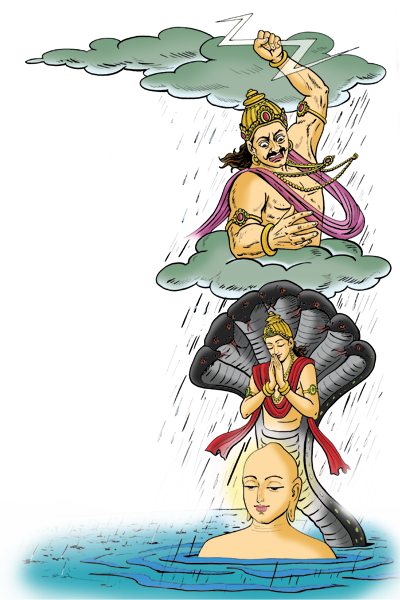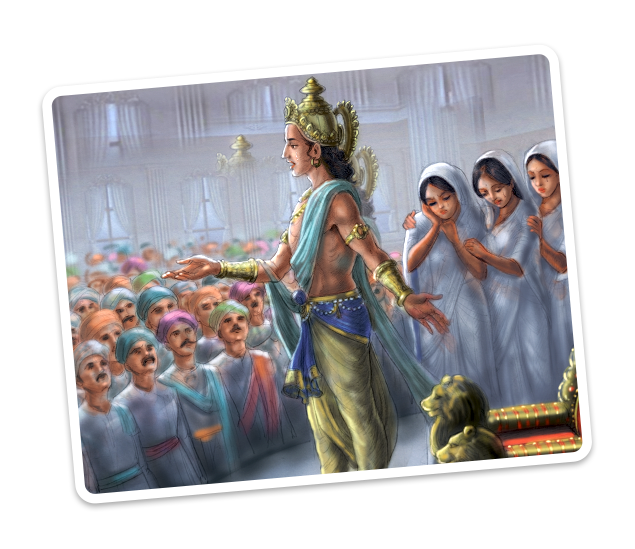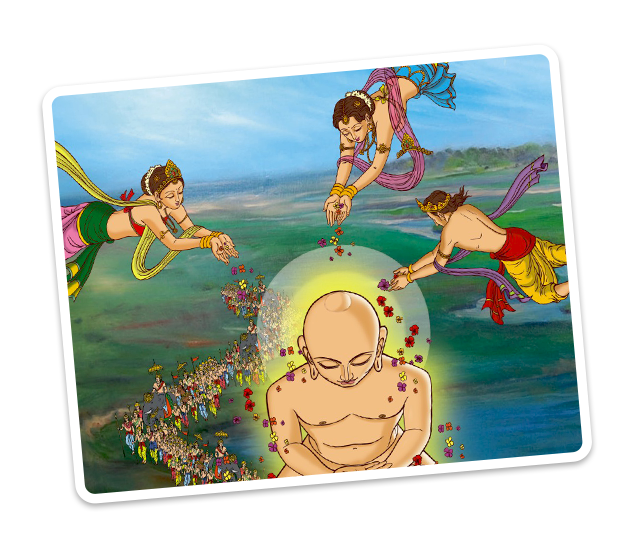Once, while Lord Parshvanath was travelling from one place to another, He arrived in the neighborhood of an ashram where ascetics did penance. Since it was already dusk, the Lord stood in ‘kayotsarg’ (penance while standing) under a lush banyan tree near the ashram.
A celestial being named Meghmani, who sought revenge with the Lord from a previous birth, saw the Lord standing in penance under the banyan tree with the help of his ‘avadhignan’ (knowledge of the nature of a thing within the limitations of physical elements- space, time and feeling). He felt deep hatred arise for the Lord. He went to the Lord, took on various different forms such as that of an elephant, a lion etc. and tried to inflict tremendous suffering on the Lord in every way he possibly could, but the Lord was not moved. When his efforts were not successful in any way, then Meghmani began to shower heavy rains with thunder and lightning. The impact of such heavy rains was that birds and animals started dying an untimely death, but the Lord was not moved. Eventually, the level of rainwater rose up to the Lord’s ears and further more it reached the tip of his nose, yet the Lord was unmoved.

Just then, Dharnendra Dev, a celestial being, raced towards the Lord. After bowing down at the Lord’s feet, Dharnendra Dev created a golden lotus under the Lord’s feet to raise Him higher and protected Him from above with a seven hooded serpent canopy.
The Lord remained deep in meditation. He did not feel any attachment for Dharnendra Dev who had obliged Him nor did He have abhorrence for Meghmani who had caused Him such tremendous suffering. He only had sambhaav (a state of neither attachment nor abhorrence towards others) towards both of them.
Due to the Lord’s ‘vitraagta’ (a state of absolutism or total non-attachment), He cleared all His accounts of revenge and attained liberation in that particular lifetime.





